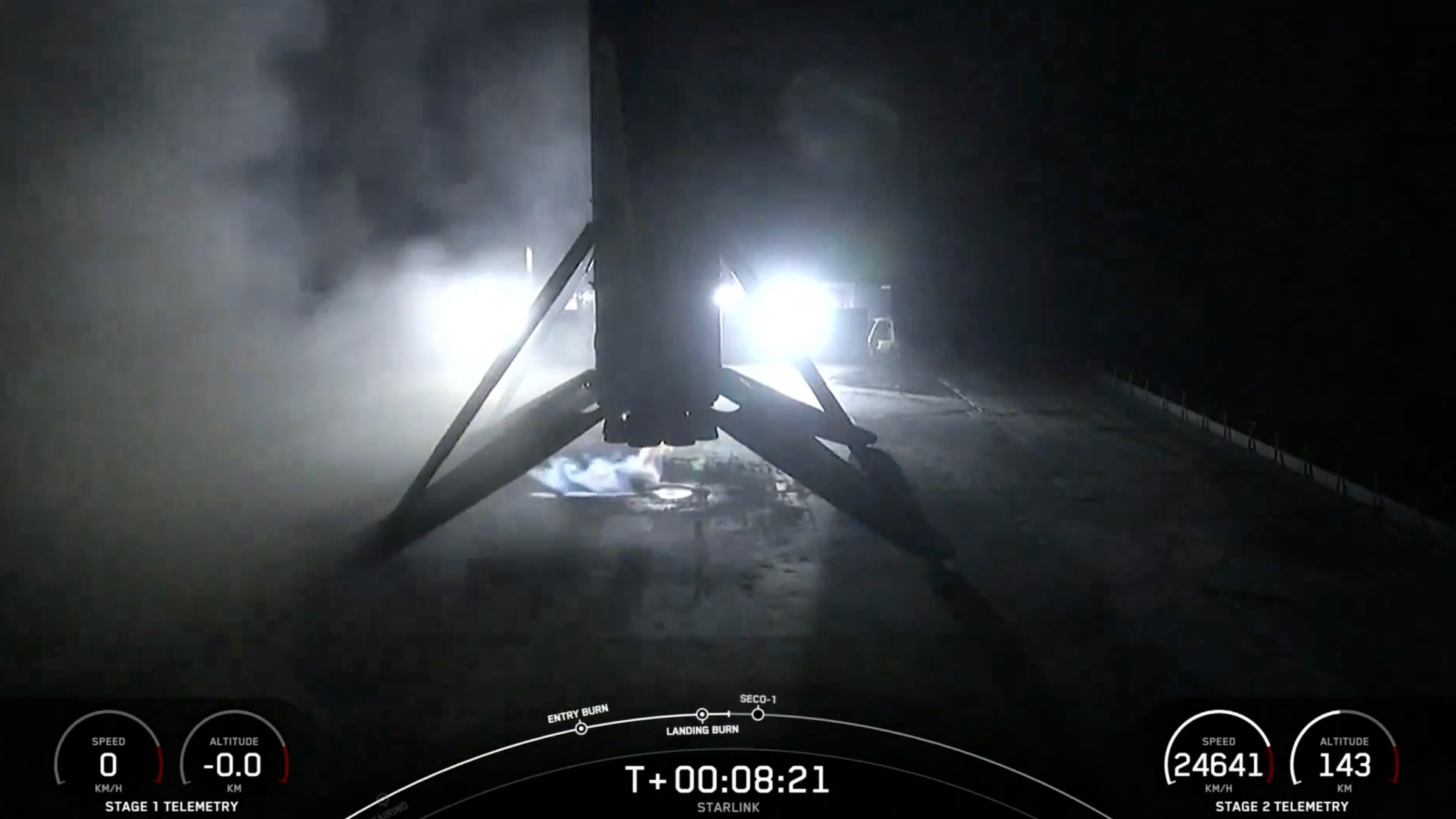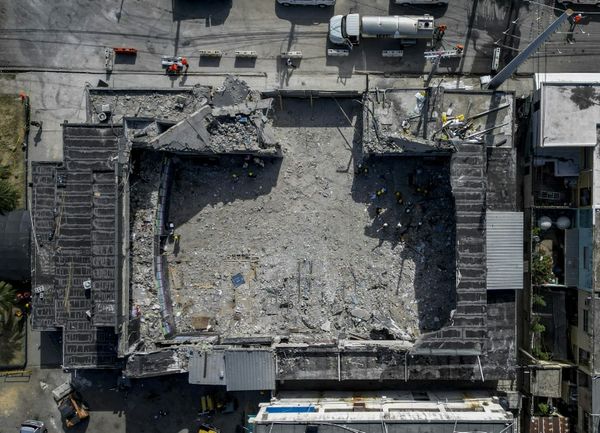
SpaceX wasn't grounded for long.
The company launched 23 of its Starlink broadband satellites from NASA's Kennedy Space Center in Florida atop a Falcon 9 rocket on Saturday (July 27) at 1:45 a.m. EDT (0545 GMT).
It was SpaceX's first liftoff since July 11, when a Falcon 9 suffered an upper-stage failure that led to the loss of 20 Starlink spacecraft.

The Falcon 9's first stage returned to Earth on Saturday about eight minutes after launch as planned. It made a vertical touchdown on SpaceX's Just Read the Instructions drone ship, which was stationed in the Atlantic Ocean.
It was the 17th launch and landing for this particular booster, according to a SpaceX mission description. Thirteen of its flights have been Starlink missions.
The rocket's upper stage, meanwhile, continued hauling the 23 Starlink satellites to low Earth orbit (LEO). It deployed them right on schedule, about 63 minutes after launch, SpaceX confirmed via X.

The July 11 failure resulted from a leak of liquid oxygen, which prevented the Falcon 9's upper stage from performing an orbit-raising burn as planned. SpaceX's anomaly investigation found the likely cause of that leak — a crack in a line for a pressure sensor in the liquid-oxygen system.
SpaceX made a fix ahead of Saturday's flight.
"For near-term Falcon launches, the failed sense line and sensor on the second-stage engine will be removed," SpaceX wrote in an anomaly update on Thursday afternoon (July 25). "The sensor is not used by the flight safety system and can be covered by alternate sensors already present on the engine."
SpaceX said that it has filed its mishap report to the U.S. Federal Aviation Administration (FAA), which oversees such investigations. This particular investigation apparently remains open, but the FAA gave a green light for Saturday's launch nonetheless.
“After a comprehensive review, the FAA determined no public safety issues were involved in the anomaly that occurred during the SpaceX Starlink Group 9-3 launch on July 11," the FAA said in a statement sent to TechCrunch. "This public safety determination means the Falcon 9 vehicle may return to flight operations while the overall investigation remains open, provided all other license requirements are met."
The July 11 mishap was the first in-flight failure for a Falcon 9 since June 2015, ending a streak of more than 300 straight successful liftoffs. (A Falcon 9 did explode on the pad during preflight testing in September 2016, however.)
Editor's note: This story was updated at 2:10 a.m. ET on July 27 with news of successful launch and rocket landing, then again at 2:52 a.m. ET with news of satellite deployment.







